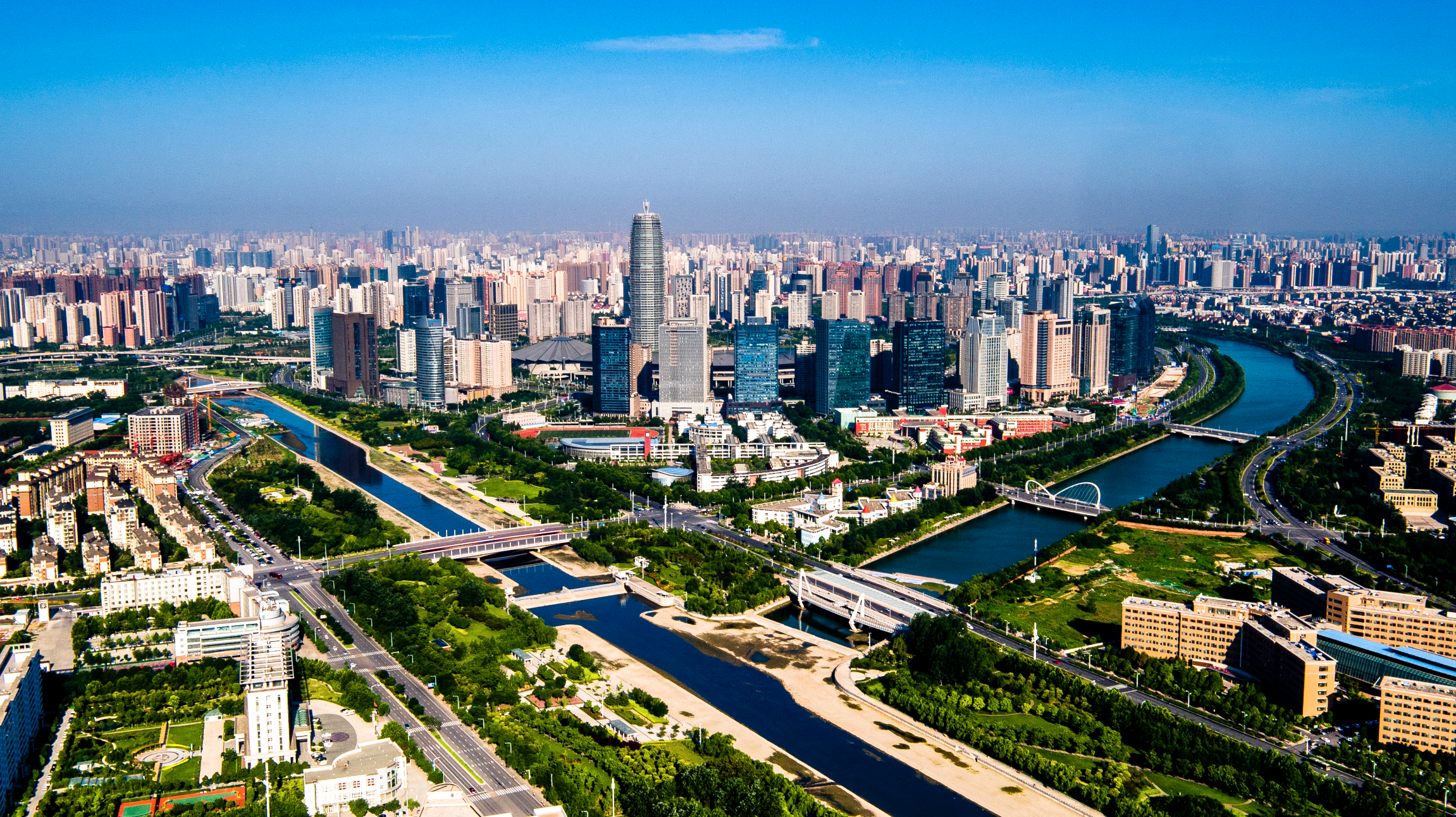
Oct 21, 2014: The sun heightens and dips westward. The bus drives eastward to Zhengzhou’s freshest district – once known as China’s biggest ghost town, with layers upon layers of developed yet deserted tower blocks, clear roads and untouched parks. The 58-square-mile zone may not be buzzing, but it’s no longer lying dormant. As the capital of Henan, and with a rapidly growing population now around 8 million, the miles of road and stack of houses won’t remain silent for long.
The corn-shaped pagoda towers out of the man-made lake, and over the five golden eggs of the museum, as well as the exhibition center crafted into a gigantic black paper fan. As modern-day Zhengzhou continues building upward, historic Zhengzhou remains in the underworld. Sweeping the ancient plains of China, under forests of trees and steel, pieces of civilization lay dormant, including art and tombs. For such a historic region, Zhengzhou’s success remains in the air and earth. While the peaks of the city are rising, it must dig deeper for its tombs of history.
For the dummies, Zhengzhou is a city on bank of Yellow River, China and capital of Henan Province located in north central. Zhengzhou vital transportation hub especially for railways as many important railway trunks pass the city. It also serves as the political, economic, technological, and educational centre of the province. Like many cities in China, Zhengzhou has an extensive history. It was once the capital city of the Shang Dynasty in 16th century B.C. Pottery unearthed in the area is believed to be the oldest porcelain ever found in the country. The city is located in the center of the country and rapidly growing city. The city is a national historical and cultural city and also the first destination for any Henan Tour.
Best attraction is its Shaolin Temple – a Buddhist temple in Dengfeng county, Zhengzhou and located in the forests of Shaoshi Mountain one of the seven mountains of Song mountains. The mountain has wild flowers and pines on the mountain. With birds singing and a brook spattering, a beautiful scene. It is one of the four holy Buddhist temples of China. The temple is included in UNESCO’s World Cultural & Natural Heritage List in 2010. It is the birth place of cradle of the Chinese Zen Buddhism and the Shaolin Martial Arts such as Shaolin Cudgel. The Temple has many of attractions, such as the Hall of Heavenly Kings (Tianwangdian), the Mahavira Hall (Daxiongbaodian), the Pagoda Forest, the Dharma Cave and the Martial Art Training Center.
